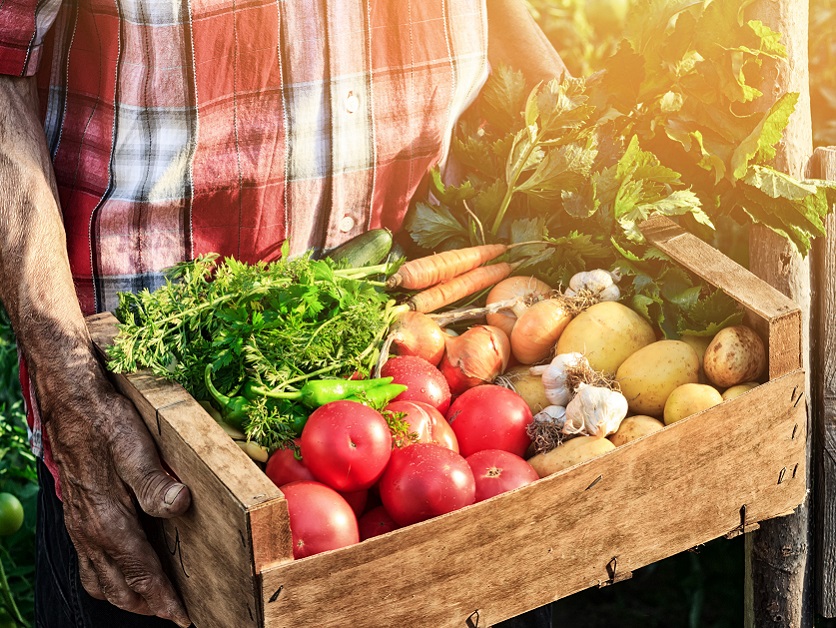WASHINGTON, Feb. 23, 2017 – The U.N.’s Food and Agricultural Organization is warning that mankind's future ability to feed itself is in jeopardy due to intensifying pressures on natural resources, mounting inequality, and the fallout from a changing climate.
A new FAO report – “The Future of Food and Agriculture: Trends and Challenges” – notes that although significant progress in reducing global hunger has been achieved over the past 30 years, "expanding food production and economic growth have often come at a heavy cost to the natural environment.
“Almost one half of the forests that once covered the Earth are now gone. Groundwater sources are being depleted rapidly. Biodiversity has been deeply eroded," the report notes. As a result, "planetary boundaries may well be surpassed, if current trends continue," FAO Director-General José Graziano da Silva warns in his introduction to the report.
By 2050 the world population likely will have grown to nearly 10 billion people, FAO said, up almost 3 billion from the present population. In a scenario with moderate economic growth, this population increase will push up global demand for agricultural products by 50 percent over present levels, the report predicts, intensifying pressures on already-strained natural resources.
At the same time, greater numbers of people will be eating fewer cereals and larger amounts of meat, fruits, vegetables and processed food — a result of an ongoing global dietary transition that will further add to those pressures, driving more deforestation, land degradation, and greenhouse gas emissions.
The planet's changing climate will throw up additional hurdles. "Climate change will affect every aspect of food production," the report says. Changes include a greater variability of precipitation and more droughts and floods.
The big question core question raised by the FAO report is whether the world's agriculture and food systems are capable of sustainably meeting the needs of a burgeoning global population.
The short answer, according to FAO, is yes. “The planet's food systems are capable of producing enough food to do so, and in a sustainable way, but unlocking that potential — and ensuring that all of humanity benefits — will require ‘major transformations,’” according to an FAO release.
Without a push to invest in and retool food systems, far too many people will still be hungry in 2030 — the year by which the FAO’s new Sustainable Development Goals (SDG) agenda has targeted the eradication of chronic food insecurity and malnutrition, the report warns.
"Without additional efforts to promote pro-poor development, reduce inequalities and protect vulnerable people, more than 600 million people would still be undernourished in 2030," the report says. In fact, the current rate of progress would not even be enough to eradicate hunger by 2050.
Where will our food come from? The report says that the production increases needed to meet food demand will have to come mainly from improvements in productivity and efficiencies in how we use resources, given the limited scope for expanding agriculture's use of more land and water resources.
However, there are worrying signs that yield growth is levelling off for major crops, the report says. Since the 1990s, average increases in the yields of maize, rice, and wheat at the global level generally run just over 1 percent per year, the report notes.
To tackle these and the other challenges outlined in the report, "business-as-usual" is not an option, report argues.
"Major transformations in agricultural systems, rural economies and natural resource management will be needed if we are to meet the multiple challenges before us and realize the full potential of food and agriculture to ensure a secure and healthy future for all people and the entire planet," it says.
"High-input, resource-intensive farming systems, which have caused massive deforestation, water scarcities, soil depletion and high levels of greenhouse gas emissions, cannot deliver sustainable food and agricultural production," adds the report.
Like what you see here? Agri-Pulse subscribers get our Daily Harvest email and Daybreak audio Monday through Friday mornings, a 16-page newsletter on Wednesdays, and access to premium content on our ag and rural policy website. Sign up for your four-week free trial Agri-Pulse subscription.
FAO says the core challenge is to produce more with less, while preserving and enhancing the livelihoods of small-scale and family farmers, and ensuring access to food by the most vulnerable. For this, a twin-track approach is needed which combines investment in social protection, to immediately tackle undernourishment, and pro-poor investments in productive activities — especially agriculture and in rural economies — to sustainably increase income-earning opportunities of the poor.
The world will need to shift to more sustainable food systems which make more efficient use of land, water and other inputs and sharply reduce their use of fossil fuels, leading to a drastic cut of agricultural green-house gas emissions, greater conservation of biodiversity, and a reduction of waste. This will necessitate more investment in agriculture and agrifood systems, as well as greater spending on research and development, the report says, to promote innovation, support sustainable production increases, and find better ways to cope with issues like water scarcity and climate change.
Along with boosting production and resilience, equally critical will be creating food supply chains that better connect farmers in low- and middle-income countries to urban markets — along with measures which ensure access for consumers to nutritious and safe food at affordable prices, such as such as pricing policies and social protection programs, it says.
#30
For more news, go to: www.Agri-Pulse.com


